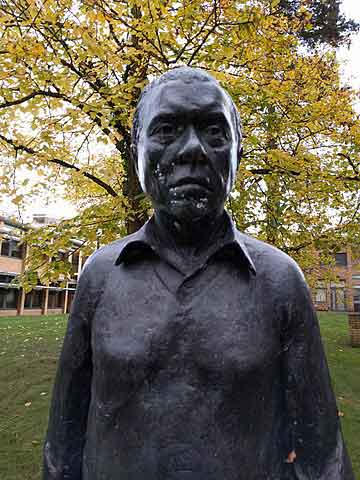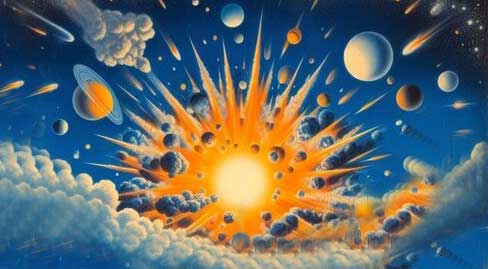The term “Big Bang,” widely adopted to describe the origin of the universe, was coined by English astronomer Fred Hoyle during a BBC radio broadcast in 1949. However, Hoyle wasn’t the father of the Big Bang theory; quite the opposite—he strongly opposed it.
The context in which Hoyle used the catchy new term during that radio broadcast suggests that it was not intended as mockery of the new explosive hypothesis that contradicted his own. Instead, it served a straightforward purpose: to help radio listeners differentiate between the steady state model of the universe, which Hoyle personally supported, and the newcomer, which he described as “the hypothesis that all matter of the universe was created in one big bang at a particular time in the remote past.”

The new concept Hoyle was trying to explain on the radio wasn’t actually new. The idea of the expanding universe originated 20 years earlier in an article written by Belgian physicist Georges Lemaître, first published in Annales de la Société Scientifique de Bruxelles in 1927. Despite its significance, it was largely ignored at the time. Nearly 20 year later the “Three Musketeers”—a group of American cosmologists consisting of George Gamow, Ralph Alpher, and Robert Herman—transformed Lemaitre’s idea into what is now known as the Big Bang model. Initially dismissed as the work of “imaginative writers,” Gamow’s model spent two decades in obscurity before the scientific community accepted it and, much to Gamow’s dismay, enthusiastically embraced the term “Big Bang.” Therefore, it took over 40 years for the Big Bang theory to achieve recognition as the basis of the modern understanding of the past, present, and likely future of the universe.
In the meantime, Hoyle’s favored steady state theory has been invalidated by observations and discoveries like the cosmic microwave background. It is now rejected by most cosmologists, astrophysicists, and astronomers. Despite the emergence of new evidence supporting the Big Bang model, Hoyle refused to give up his steady state theory and continued refining it until his death in 2001.■
Sources
- Big Bang: the etymology of a name Big Bang | Oxford Academic
- O’Raifeartaigh, C. Eddington, Lemaître and the Discovery of the Expanding Universe. School of Science and Computing, Waterford Institute of Technology.
- What Astronomers Are Still Discovering About the Big Bang Theory | Smithsonian Magazine
- George Gamow and the atomic bomb | Restricted Data | Nuclear Secrecy



Leave a comment